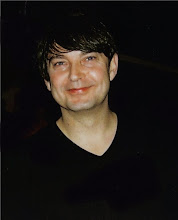If Everything is Art, Then Nothing is Art
 Marcel Duchamp's "Urinal" or "Fountain"
Marcel Duchamp's "Urinal" or "Fountain" Mark McGowan pulling a television set 6 miles, with his ear.
Mark McGowan pulling a television set 6 miles, with his ear.The concept that ‘anything can be art’ was first introduced to the art world through the actions of Marcel Duchamp in 1917. His decision to include a common Urinal as part of an exhibition turned the definition of art on its ear. http://en.wikipedia.org/wiki/Marcel_Duchamp
Duchamp had recognized that through Modernism, much of what gave value to art in the past (time spent, skill, etc.) had been challenged by abstraction; leaving a vacuum in terms of value. By including a urinal (on a sculptural base, and with a signature- although a pseudonym), he had reduced the characteristics of art to its bare minimum. To be Art, an object simply had to be signed and exhibited in a legitimate art institution. This later became defined as "The Institutional Theory of Art" and these objects defined as "ready-mades". The fact that this revolutionary act signaled the end of Art was not lost on Duchamp- he spent the latter part of his life playing chess rather than creating endless ready-mades. Much of what is now defined as Post-Modernism, or Post-Post Modernism (Po Po Mo) is simply the regurgitation of the this first act of insurrection and nothing more. In the end the only value in such a system is in the originality of the concept, hence the term "Conceptual Art".
Galleries today, (dependent upon Capitalism for their very survival), rely upon a vague sense of Value, despite Duchamp’s near 100 year old comment on value. They depend upon certain Artists being valued over others and this is represented by the price of the artwork. When Duchamp gave up painting to create Ready-Mades, he essentially moved from the medium of paint to the medium of life, the medium of ideas, making Galleries irrelevant except to a false sense of value and a false sense of currency.
http://arthist.binghamton.edu/duchamp/map.html


0 Comments:
Post a Comment
<< Home